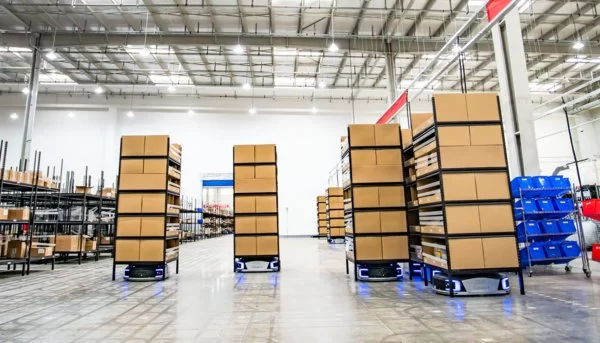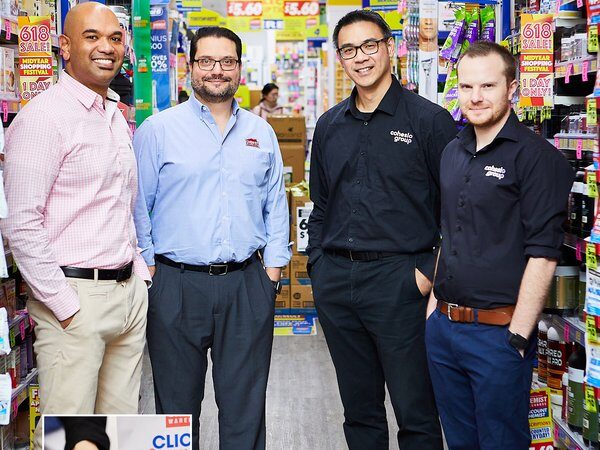HAMBURG, Germany and BEIJING, Aug. 20, 2020 — Extended relationship showcases commitment to providing customers worldwide across industries with smart AMR solutions to combat supply chain complexities. Geek+ and Körber announce global partnership for AMR deployment Geek+, a global AMR leader, and Körber, the global supply chain technology…
iQOO becomes Premium Partner of BMW M Motorsport for the 2020 DTM Season
SHENZHEN, China, Aug. 19, 2020 — vivo’s global smartphone brand iQOO can today announce it is a Premium Partner of BMW M Motorsport in the DTM (Deutsche Tourenwagen Masters). The BMW worksdriver Timo Glock, from Germany, will give his best to drive the iQOO BMW M4 DTM to victory this season and champion…
Baemin Introduces an Outdoor Delivery Robot “The City of the Future Became A Reality”
– Baedal Minjok started an outdoor delivery robot service at “Gwanggyo Alley Way,” a multipurpose housing complex in Gwanggyo – When orders are placed in restaurants within the plaza via Baemin application, the robot delivers to the ground floor of customer’s residence – Delivery fee goes down thanks to the…
Senmiao Technology Limited Announces Closing of US$6.0 Million Public Offering of Common Stock
CHENGDU, China, Aug. 7, 2020 — Senmiao Technology Limited ("Senmiao") (NASDAQ: AIHS), a provider of automobile transaction and related services targeting the online ride-hailing industry in China, today announced the closing of its previously announced underwritten public offering of 12,000,000 shares of common stock at a price of $0.50 per…
Geek+ and Kuecker Logistics Group Announces Distribution Agreement
Geek+ and Kuecker Logistics Group enter a distribution partnership to provide smart logistics robotics solutions to customers across North America SAN DIEGO, California, July 29, 2020 — Geek+, a global AMR leader, announced a beginning of a new distribution partnership with Kuecker Logistics Group (KLG), a material handling…
Intelligent traffic management: helping vehicles to flow through an ancient city
Traffic continues to grow in every major city. But how do you beat congestion in these restricted urban spaces? In China’s ancient-walled city of Xi’an, they’re adopting an intelligent traffic management system based on Hikvision technology – and boosting traffic flow while reducing journey time. HANGZHOU, China, July 24, 2020…
AUTOCRYPT Wins V2X SCMS Contract for Nationwide ITS Project
SEOUL, South Korea, July 23, 2020 — AUTOCRYPT Co., Ltd., a leading transportation security solutions provider, announced that it would be heading the Korean Expressway Corporation (KEC) V2X Security Credential Management System (SCMS) project. AUTOCRYPT is to deliver production-grade SCMS for KEC, which announced its plans for a national V2X…
Frost & Sullivan Applaudes AWS for Leading the Automotive Cloud Services Market with a Comprehensive Suite of Solutions
AWS complements its large ecosystem of solutions and partners with a deep focus on customer experience SANTA CLARA, California, July 22, 2020 — Based on its recent analysis of global automotive cloud services platforms for the mobility industry, Frost & Sullivan recognizes Amazon Web Services, Inc. (AWS) with the 2020 Global…
Nine Leading Businesses Launch New Initiative to Accelerate Progress to a Net Zero Future
Initiative is committed to leading by example, charting the course for other businesses to follow REDMOND, Washington, July 21, 2020 — The heads of nine companies today announced the establishment of a new initiative to accelerate the transition to a net zero global economy. The initiative, known as Transform to Net…
Chemist Warehouse teams up with Cohesio Group (Körber) for same-day delivery solution
MELBOURNE, Australia, July 15, 2020 — In response to the changing demands of consumers and a record peak in online orders during COVID-19, Australia’s largest pharmacy retailer, Chemist Warehouse, has teamed up with Cohesio Group (Körber) to launch a same-day delivery service for its 1.5 million weekly customers. …







